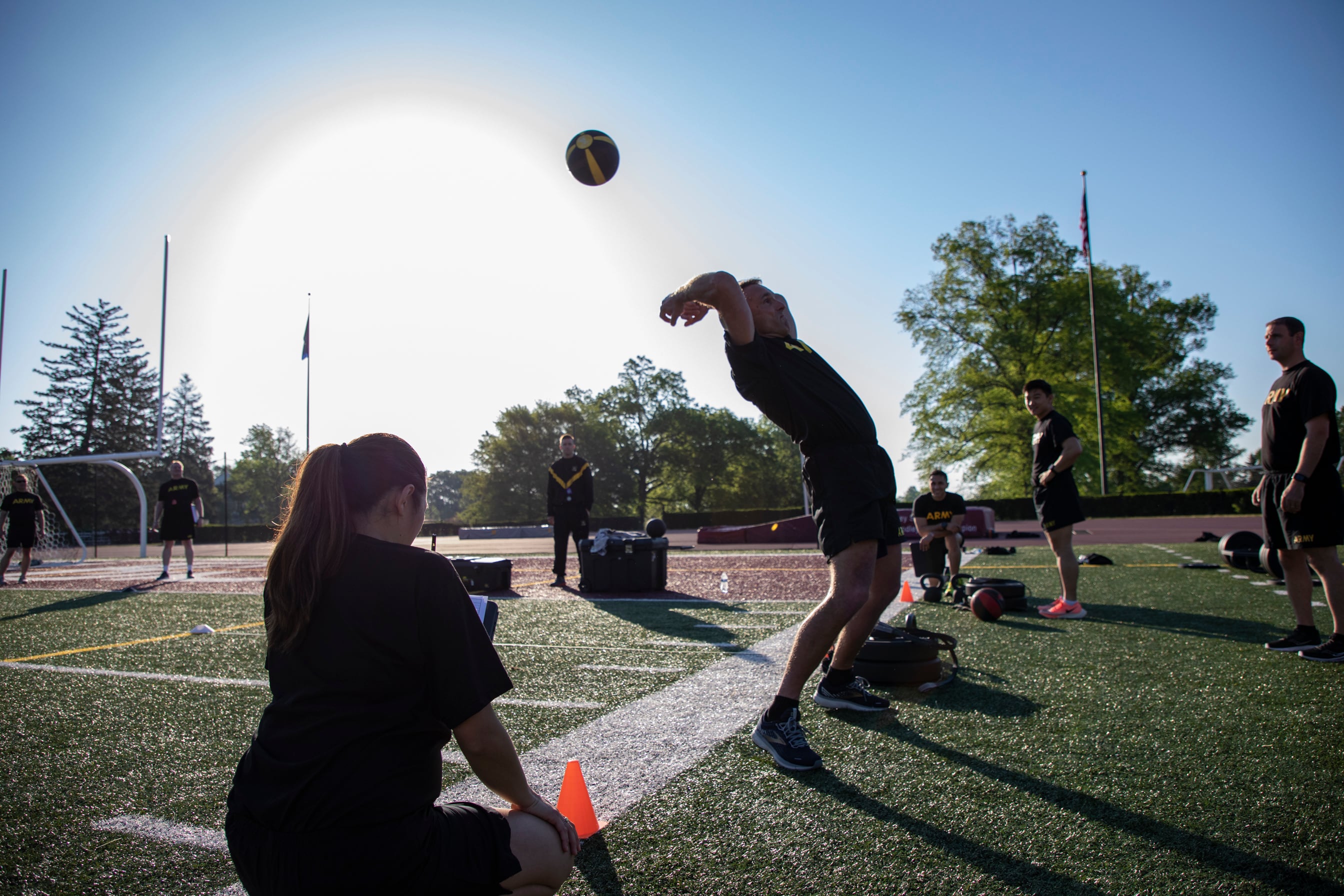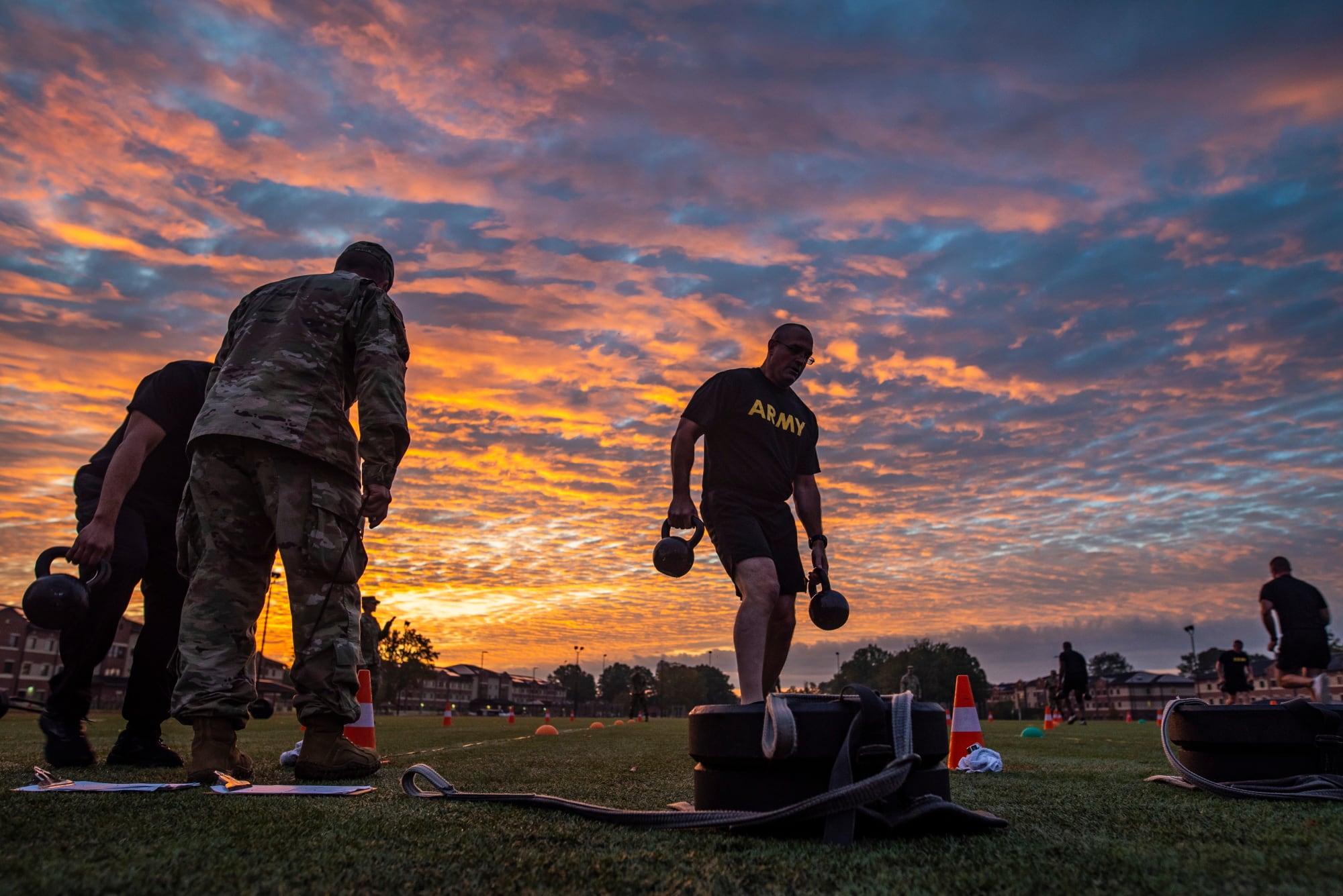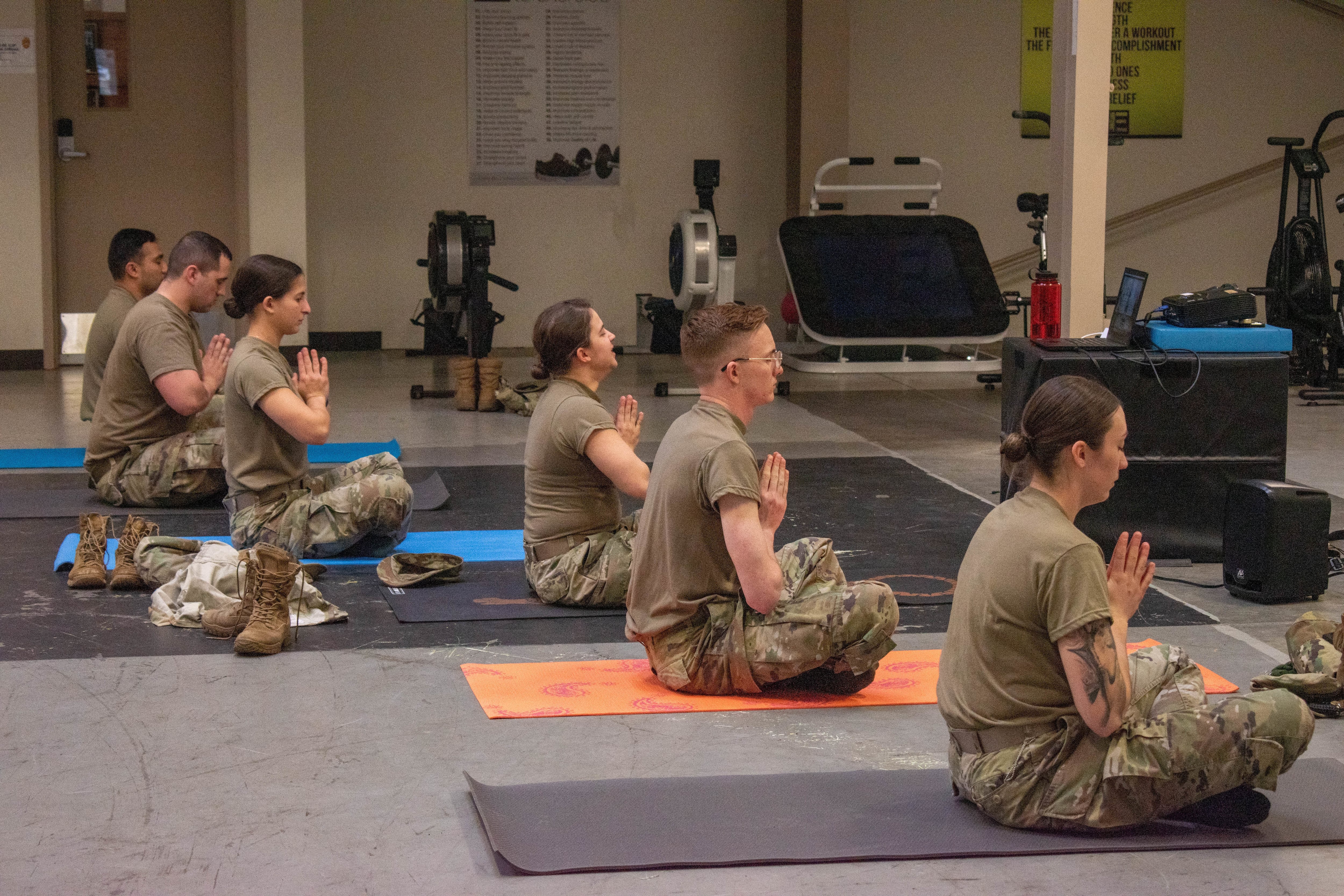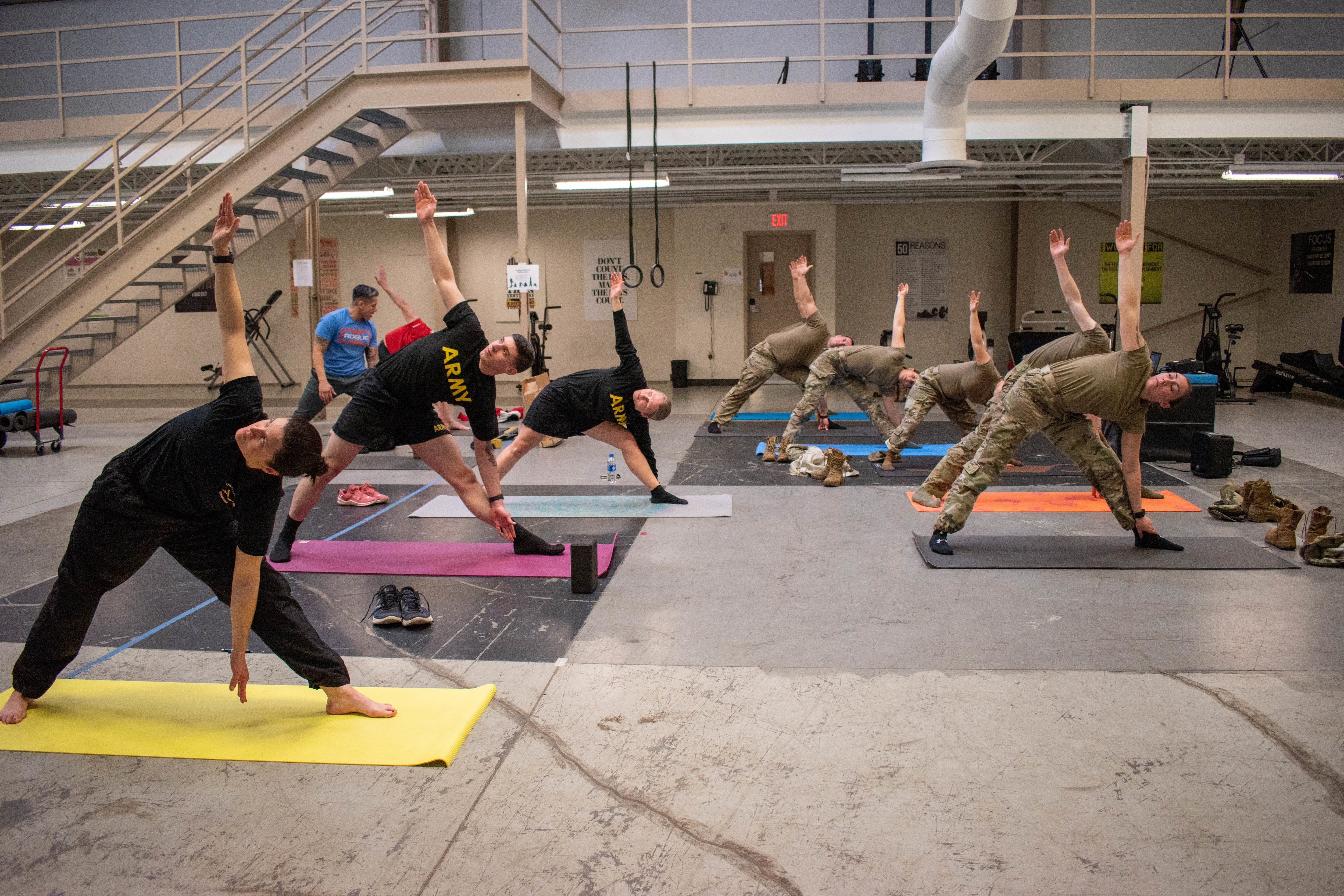FORT EUSTIS, Virginia — The sergeant major of the Army has a message for senior enlisted and unit commanders: it’s okay to do physical training at hours outside the crack of dawn and you better read the new health and fitness manual.
Sgt. Maj. Michael Grinston told an audience of more than 200 at the second annual Holistic Health and Fitness conference and exposition that leaders need to get creative in training planning, scheduling and management.
“Imagine a world where you do some PT, do some other things, then go to the range,” Grinston said. “Poor training management means, ‘I have to stick to a 0630 training schedule because I can’t think past tomorrow.’”
RELATED

This creative thinking, along with adhering to new Army fitness standards, are steps service officials say they’re taking to revolutionize physical, nutritional, mental and spiritual health for each soldier through the Holistic Health and Fitness program, also known as H2F.
The service has hired mental health specialists and contracted civilian physical and occupational therapists. Those positions, rather than being housed solely in medical facilities, now reside at the brigade-level.
Since establishing the H2F program in late 2020, the Army has fielded teams and equipment to 28 brigades with plans to fully field 110 such teams across the force by 2030. Equipment includes the devices used for fitness tests, such as hexagon bars for deadlifts, stations for powerlifting training, kettlebells and medicine balls.
The sergeant major of the Army discussed the H2F program at the Center for Initial Military Training, part of U.S. Army Training and Doctrine Command, on Tuesday.
One audience member said that team members are seeing high use of their equipment, trainers and facilities between 6:30-8 a.m. across the units that have these items at their disposal.
But not so much the rest of the day.
Grinston pointed to work at the 82nd Airborne Division, which keeps a range open all day for use by its various subordinate units. Of course, that range has a marksmanship element, but soldiers are also challenged with mental puzzles before and after they shoot. They also do physical training as part of their range visit.
“Some units have done exceptionally well with this,” Grinston said. “And you’ve got to be creative.”

The top enlisted soldier gave his own example from his days as a first sergeant many years ago. He recalled meeting with his brigade commander to get his training plan approved. Later, Grinston’s own senior sergeant major told him to add another piece of training.
Grinston “kindly refused,” he said. And after doing his pushups he repeated back to his sergeant major that he had an approved training plan from the brigade commander, and until that changed, that would be what he’d stick to for his soldiers.
“We all have to do better with training management,” Grinston said. “We have to manage our time better and leaders have to be comfortable training outside that window.”
But first, soldiers need to know what they should be training.
That gap was exposed when another retired soldier, also part of the H2F team at TRADOC, shared that he and his colleagues are seeing few if any unit leaders, enlisted and officer alike, who’ve read the FM 7-22, which is the Army’s H2F manual.
Grinston said he’d address that across the force to reinforce that leaders read and implement the manual’s material.
“Maybe I’ve got to do better,” Grinston said. “That starts with the senior sergeants major in the Army, maybe we start with a conversation about FM 7-22″

He saw the same himself when, in an unannounced visit to do PT with a unit recently, soldiers started their session with a stretch that had been removed from Army regulations about 15 years previously — a calf stretch with toe pull, to be exact.
Six months after the Army Combat Fitness Test’s version 3.0 was released, Grinston observed a unit that didn’t perform the plank exercise as part of their session.
“We’ve been telling you to do this for six months,” Grinston said. “How do you not know that?”
The sergeant major also said that, if forced to choose, he’d put more resources, focus and funding on more regular use of mental resiliency training.
“The mental aspect is where we’re lacking most,” he said.
Grinston started his speaking session with a one-minute focus on breathing — a mindfulness exercise in the 7-22 manual.
“We don’t practice mental resiliency until something breaks and we go to behavioral health,” Grinston said.
The sergeant major said going to behavioral health is good and should be encouraged when a soldier needs it.
But a concentration on regular mental resiliency training can be preventative and help shore up individual resources for stress and mental health challenges that confront everyone, soldier and civilian alike.
Todd South has written about crime, courts, government and the military for multiple publications since 2004 and was named a 2014 Pulitzer finalist for a co-written project on witness intimidation. Todd is a Marine veteran of the Iraq War.





